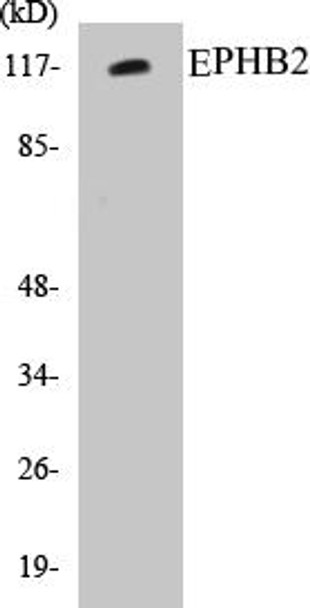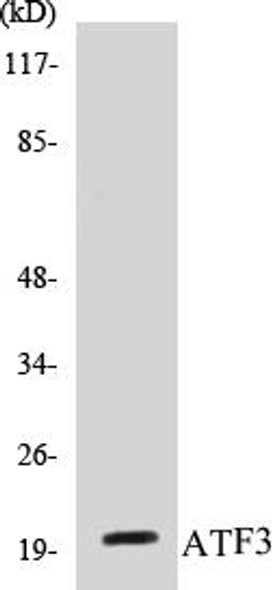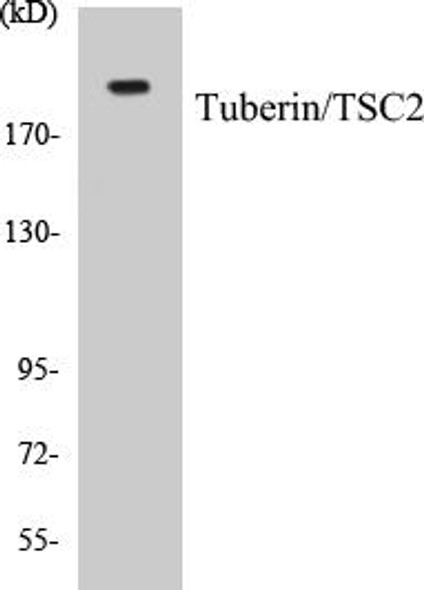Description
EPHB2 Colorimetric Cell-Based ELISA Kit
The EphB2 Colorimetric Cell-Based ELISA Kit is specifically designed for the reliable detection of EphB2 levels in cell lysates and tissue extracts from various sources. This kit offers high sensitivity and specificity, providing accurate and reproducible results for your research needs.EphB2 is a critical receptor protein that plays a key role in cellular signaling pathways, particularly in neuronal development and synaptic plasticity. Dysregulation of EphB2 has been linked to neurological disorders, including Alzheimer's disease and autism, making it a valuable biomarker for understanding these conditions and exploring potential therapeutic interventions.
With easy-to-follow protocols and a user-friendly format, the EphB2 Colorimetric Cell-Based ELISA Kit is an essential tool for investigating the role of EphB2 in various biological processes and diseases. Upgrade your research capabilities with this advanced kit from AssayGenie.
| Product Name: | EPHB2 Colorimetric Cell-Based ELISA |
| Product Code: | CBCAB00643 |
| ELISA Type: | Cell-Based |
| Target: | EPHB2 |
| Reactivity: | Human |
| Dynamic Range: | > 5000 Cells |
| Detection Method: | Colorimetric 450 nmStorage/Stability:4°C/6 Months |
| Format: | 96-Well Microplate |
The EPHB2 Colorimetric Cell-Based ELISA Kit is a convenient, lysate-free, high throughput and sensitive assay kit that can detect EPHB2 protein expression profile in cells. The kit can be used for measuring the relative amounts of EPHB2 in cultured cells as well as screening for the effects that various treatments, inhibitors (ie siRNA or chemicals), or activators have on EPHB2.
Qualitative determination of EPHB2 concentration is achieved by an indirect ELISA format. In essence, EPHB2 is captured by EPHB2-specific primary antibodies while the HRP-conjugated secondary antibodies bind the Fc region of the primary antibody. Through this binding, the HRP enzyme conjugated to the secondary antibody can catalyze a colorimetric reaction upon substrate addition. Due to the qualitative nature of the Cell-Based ELISA, multiple normalization methods are needed:
| 1. | A monoclonal antibody specific for human GAPDH is included to serve as an internal positive control in normalizing the target absorbance values. |
| 2. | Following the colorimetric measurement of HRP activity via substrate addition, the Crystal Violet whole-cell staining method may be used to determine cell density. After staining, the results can be analysed by normalizing the absorbance values to cell amounts, by which the plating difference can be adjusted. |
| Database Information: | Gene ID: 2048, UniProt ID: P29323, OMIM: 600997, Unigene: Hs.523329 |
| Gene Symbol: | EPHB2 |
| Sub Type: | None |
| UniProt Protein Function: | EphB2: a receptor tyrosine kinase of the Eph family. A receptor for ephrin-B family members. Activated EphB2 recruits RasGAP, down-regulating the Ras-Erk signaling axis and neurite retraction. The Eph receptor tyrosine kinase family, the largest in the tyrosine kinase group, has fourteen members. They bind membrane-anchored ligands, ephrins, at sites of cell-cell contact, regulating the repulsion and adhesion of cells that underlie the establishment, maintenance, and remodeling of patterns of cellular organization. Eph signals are particularly important in regulating cell adhesion and cell migration during development, axon guidance, homeostasis and disease. EphA receptors bind to GPI-anchored ephrin-A ligands, while EphB receptors bind to ephrin-B proteins that have a transmembrane and cytoplasmic domain. Interactions between EphB receptor kinases and ephrin-B proteins transduce signals bidirectionally, signaling to both interacting cell types. Eph receptors and ephrins also regulate the adhesion of endothelial cells and are required for the remodeling of blood vessels. The ligand-activated form of EphB2 interacts with multiple proteins, including GTPase-activating protein (RASGAP) through its SH2 domain. Point mutations seen in prostate cancer. Overexpressed and required for migration of glioblastoma. Overexpressed and correlated with poor survival in breast cancer. Overexpression and loss of heterozygosity seen in colorectal cancers. Target for immunoconjugate drug therapy.Three splice-variant isoforms have been described. |
| UniProt Protein Details: | Protein type:Tumor suppressor; Protein kinase, TK; Protein kinase, tyrosine (receptor); Kinase, protein; Membrane protein, integral; EC 2.7.10.1; TK group; Eph family Chromosomal Location of Human Ortholog: 1p36.1-p35 Cellular Component: axon; cytosol; dendrite; extracellular region; integral to plasma membrane; plasma membrane Molecular Function:protein binding; protein-tyrosine kinase activity; transmembrane-ephrin receptor activity Biological Process: angiogenesis; axon guidance; axonal fasciculation; corpus callosum development; ephrin receptor signaling pathway; inner ear morphogenesis; nervous system development; palate development; peptidyl-tyrosine phosphorylation; phosphorylation; positive regulation of synaptogenesis; regulation of body fluid levels; urogenital system development Disease: Prostate Cancer/brain Cancer Susceptibility |
| NCBI Summary: | This gene encodes a member of the Eph receptor family of receptor tyrosine kinase transmembrane glycoproteins. These receptors are composed of an N-terminal glycosylated ligand-binding domain, a transmembrane region and an intracellular kinase domain. They bind ligands called ephrins and are involved in diverse cellular processes including motility, division, and differentiation. A distinguishing characteristic of Eph-ephrin signaling is that both receptors and ligands are competent to transduce a signaling cascade, resulting in bidirectional signaling. This protein belongs to a subgroup of the Eph receptors called EphB. Proteins of this subgroup are distinguished from other members of the family by sequence homology and preferential binding affinity for membrane-bound ephrin-B ligands. Allelic variants are associated with prostate and brain cancer susceptibility. Alternative splicing results in multiple transcript variants. [provided by RefSeq, May 2015] |
| UniProt Code: | P29323 |
| NCBI GenInfo Identifier: | 76803654 |
| NCBI Gene ID: | 2048 |
| NCBI Accession: | P29323.5 |
| UniProt Secondary Accession: | P29323,O43477, Q5T0U6, Q5T0U7, Q5T0U8, |
| UniProt Related Accession: | P29323 |
| Molecular Weight: | 110,030 Da |
| NCBI Full Name: | Ephrin type-B receptor 2 |
| NCBI Synonym Full Names: | EPH receptor B2 |
| NCBI Official Symbol: | EPHB2 |
| NCBI Official Synonym Symbols: | DRT; EK5; ERK; CAPB; Hek5; PCBC; EPHT3; Tyro5 |
| NCBI Protein Information: | ephrin type-B receptor 2 |
| UniProt Protein Name: | Ephrin type-B receptor 2 |
| UniProt Synonym Protein Names: | Developmentally-regulated Eph-related tyrosine kinase; ELK-related tyrosine kinase; EPH tyrosine kinase 3; EPH-like kinase 5; EK5; hEK5; Renal carcinoma antigen NY-REN-47; Tyrosine-protein kinase TYRO5; Tyrosine-protein kinase receptor EPH-3 |
| Protein Family: | Ephrin type-B receptor |
| UniProt Gene Name: | EPHB2 |
| UniProt Entry Name: | EPHB2_HUMAN |
| Component | Quantity |
| 96-Well Cell Culture Clear-Bottom Microplate | 2 plates |
| 10X TBS | 24 mL |
| Quenching Buffer | 24 mL |
| Blocking Buffer | 50 mL |
| 15X Wash Buffer | 50 mL |
| Primary Antibody Diluent | 12 mL |
| 100x Anti-Phospho Target Antibody | 60 µL |
| 100x Anti-Target Antibody | 60 µL |
| Anti-GAPDH Antibody | 60 µL |
| HRP-Conjugated Anti-Rabbit IgG Antibody | 12 mL |
| HRP-Conjugated Anti-Mouse IgG Antibody | 12 mL |
| SDS Solution | 12 mL |
| Stop Solution | 24 mL |
| Ready-to-Use Substrate | 12 mL |
| Crystal Violet Solution | 12 mL |
| Adhesive Plate Seals | 2 seals |
The following materials and/or equipment are NOT provided in this kit but are necessary to successfully conduct the experiment:
- Microplate reader able to measure absorbance at 450 nm and/or 595 nm for Crystal Violet Cell Staining (Optional)
- Micropipettes with capability of measuring volumes ranging from 1 µL to 1 ml
- 37% formaldehyde (Sigma Cat# F-8775) or formaldehyde from other sources
- Squirt bottle, manifold dispenser, multichannel pipette reservoir or automated microplate washer
- Graph paper or computer software capable of generating or displaying logarithmic functions
- Absorbent papers or vacuum aspirator
- Test tubes or microfuge tubes capable of storing ≥1 ml
- Poly-L-Lysine (Sigma Cat# P4832 for suspension cells)
- Orbital shaker (optional)
- Deionized or sterile water
*Note: Protocols are specific to each batch/lot. For the correct instructions please follow the protocol included in your kit.
| Step | Procedure |
| 1. | Seed 200 µL of 20,000 adherent cells in culture medium in each well of a 96-well plate. The plates included in the kit are sterile and treated for cell culture. For suspension cells and loosely attached cells, coat the plates with 100 µL of 10 µg/ml Poly-L-Lysine (not included) to each well of a 96-well plate for 30 minutes at 37°C prior to adding cells. |
| 2. | Incubate the cells for overnight at 37°C, 5% CO2. |
| 3. | Treat the cells as desired. |
| 4. | Remove the cell culture medium and rinse with 200 µL of 1x TBS, twice. |
| 5. | Fix the cells by incubating with 100 µL of Fixing Solution for 20 minutes at room temperature. The 4% formaldehyde is used for adherent cells and 8% formaldehyde is used for suspension cells and loosely attached cells. |
| 6. | Remove the Fixing Solution and wash the plate 3 times with 200 µL 1x Wash Buffer for five minutes each time with gentle shaking on the orbital shaker. The plate can be stored at 4°C for a week. |
| 7. | Add 100 µL of Quenching Buffer and incubate for 20 minutes at room temperature. |
| 8. | Wash the plate 3 times with 1x Wash Buffer for 5 minutes each time. |
| 9. | Add 200 µL of Blocking Buffer and incubate for 1 hour at room temperature. |
| 10. | Wash 3 times with 200 µL of 1x Wash Buffer for 5 minutes each time. |
| 11. | Add 50 µL of 1x primary antibodies (Anti-EPHB2 Antibody and/or Anti-GAPDH Antibody) to the corresponding wells, cover with Parafilm and incubate for 16 hours (overnight) at 4°C. If the target expression is known to be high, incubate for 2 hours at room temperature. |
| 12. | Wash 3 times with 200 µL of 1x Wash Buffer for 5 minutes each time. |
| 13. | Add 50 µL of 1x secondary antibodies (HRP-Conjugated AntiRabbit IgG Antibody or HRP-Conjugated Anti-Mouse IgG Antibody) to corresponding wells and incubate for 1.5 hours at room temperature. |
| 14. | Wash 3 times with 200 µL of 1x Wash Buffer for 5 minutes each time. |
| 15. | Add 50 µL of Ready-to-Use Substrate to each well and incubate for 30 minutes at room temperature in the dark. |
| 16. | Add 50 µL of Stop Solution to each well and read OD at 450 nm immediately using the microplate reader. |
(Additional Crystal Violet staining may be performed if desired – details of this may be found in the kit technical manual.)






